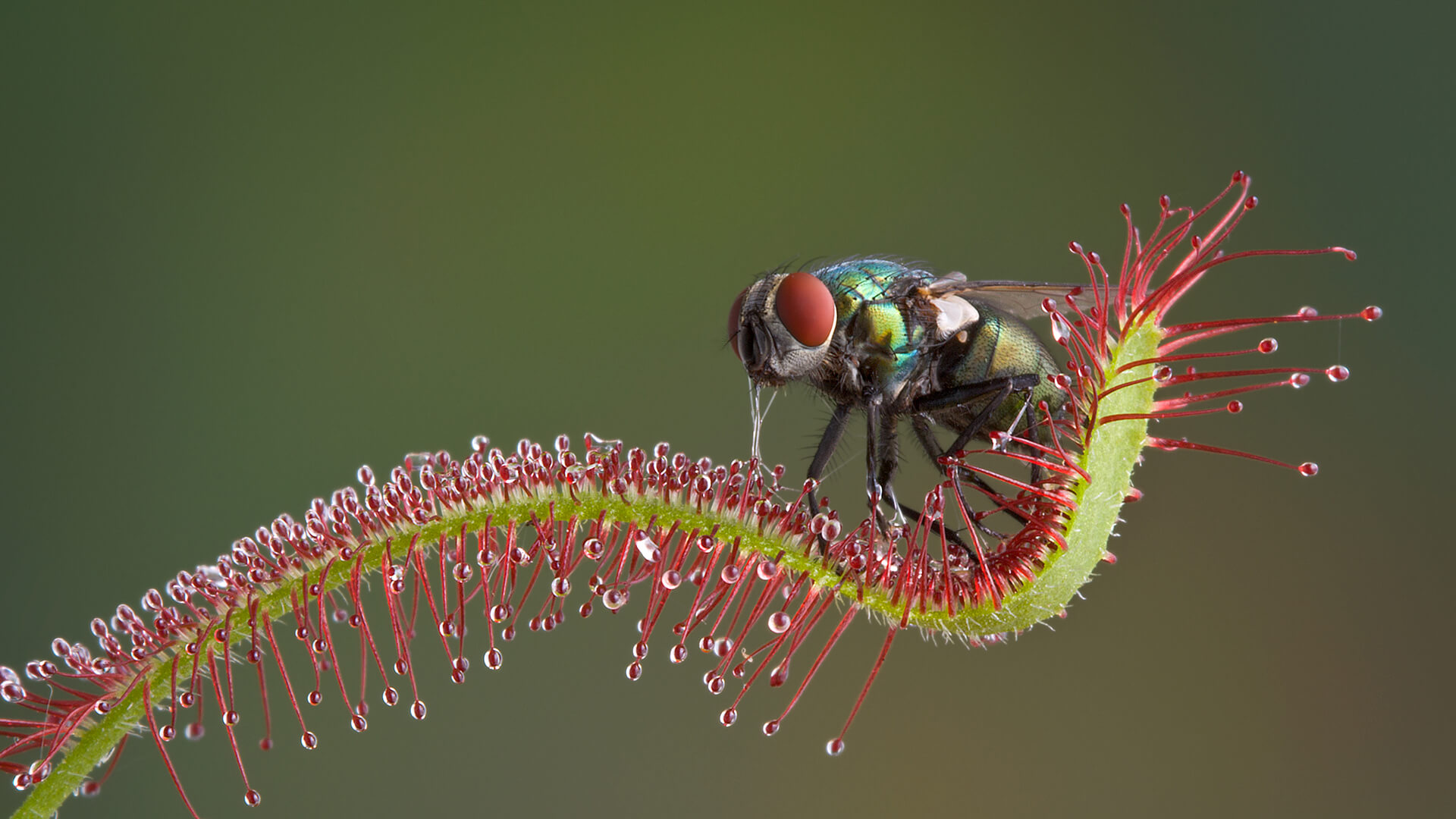Plants are productive creatures without which we would not have oxygen to breathe or get rid of carbon dioxide. Moreover, without plants we would not have the energy we need to survive. Plants obtain energy from the Sun, passing it on to us upon consuming them directly or indirectly when we consume animals that feed on plants; this is the universal natural cycle of life. However, have you ever heard of plants that not only eat insects, but also small animals?!
No need to wonder; this is reality. Some plants do not obtain enough nutrition from the soil, and hence, opt for hunting insects and small animals. However, this does not make them consumer creatures, for they remain productive through photosynthesis.
Why and how do plants consume insects?
After conducting several studies on these plants, it was found that most of them grow in nitrogen-poor soils by swamps. Nitrogen is an essential element for plants; thus, they make up for it and other missing nutrients by consuming insects. Studies have also proven that predatory, or carnivorous, plants have become to be as such due to evolution. Living organisms change, spontaneously evolving to cope with the surrounding environment. In other words, predatory plants were once regular plants, but they evolved to consume insects and small animals in response to their poor environment.

If you think about it, plants in general have neither muscular nor digestive systems; how then do they hunt and digest their preys? Predatory plants set traps to hunt insects through their attractively colorful, yet very sticky, leaves. One such species looks dewy, which attracts insects that soon get trapped by these deceivingly sticky drops. Other predatory plants emit distinctive smells that attract insects.
Once the insects are trapped, predatory plants use one of two techniques to catch them. They can change the water pressure in one side of the leaf, making it bend over the other side. Alternatively, one part of the leaf can be larger than the other so it bends over it. As for digestion and absorbing nutrients from the insect, most carnivorous plants secrete digestive enzymes or contain bacteria that do this task. Other plants do the hunting, but wait for other creatures to eat the prey, so that they may then feed on their wastes as prepared meals.
The Most Famous Carnivorous Plants
According to the latest statistics, there are about 600 different species of predatory plants around the world, the most famous of which are:
1. The Cape Sundew: A perennial plant that flourishes in humid places in South Africa and consumes insects.
2. The Red Dragon: One of the most famous carnivorous plants that also exists in South Africa. It consumes insects and small animals, such as frogs, using its large colorful leaves to attract prey.
3. The Venus Flytrap: This species is in the United States, specifically in the State of Carolina, which is rich with swamps. Flies, bees, and spiders are its main food.
A Harsh Challenge
Predatory plants face an extremely harsh challenge; namely, how pollen is transferred if its means of transportation becomes the food of plants? How do these plants reproduce?
Several research studies tackled this point in particular, and have proven that most predatory plants can differentiate between pollen carriers and other insects they consider prey. Pollen-carrying insects head to the plant flowers rich in pollen, which is usually far from the leaves. Other insects head to the plant leaves and are trapped then eventually eaten.
References
bbc.com
ncbi.nlm.nih.gov
*This article was published in SCIplanet printed magazine, Autumn 2017 Issue.